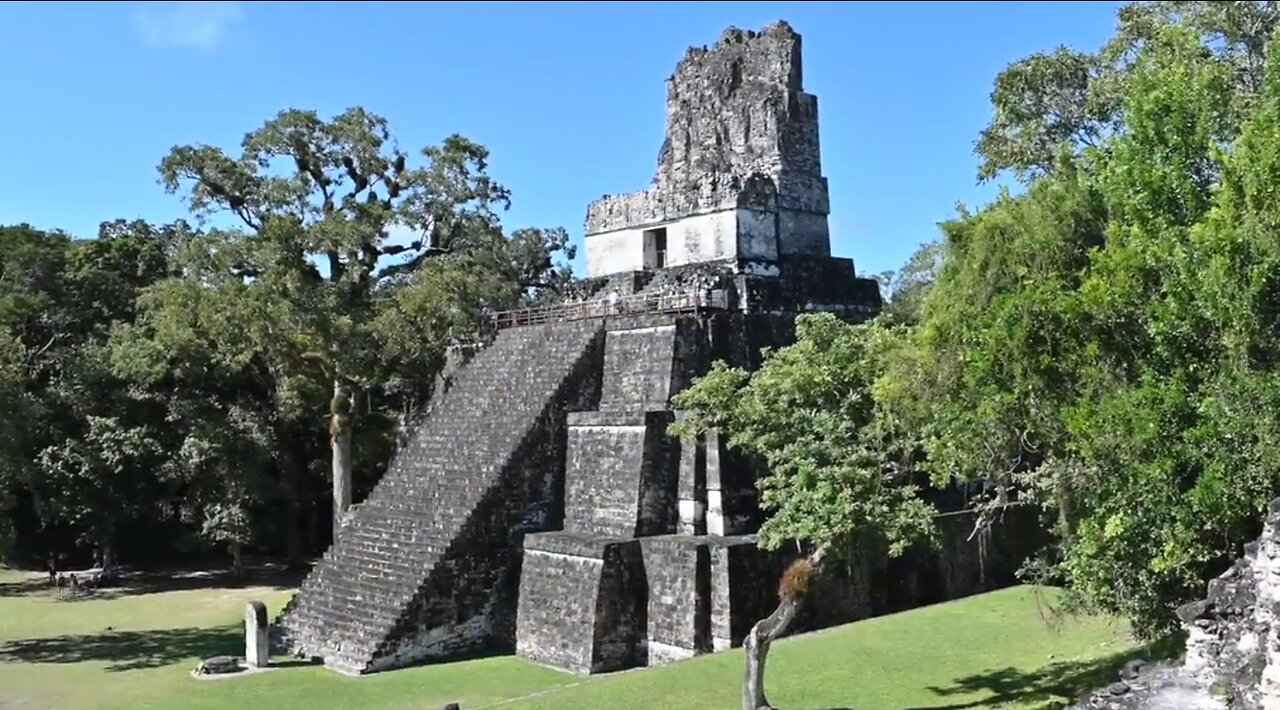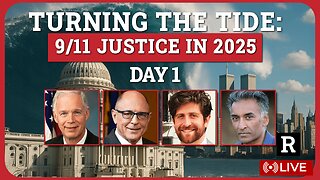Premium Only Content

Documentary: Educational: Mayans Maya Ancient America Civilization Mesoamerican History
Documentary: Educational: Mayans Maya Ancient America Civilization Mesoamerican History - The Archaic period, before 2000 BC, saw the first developments in agriculture and the earliest villages. The Preclassic period (c. 2000 BC to 250 AD) saw the establishment of the first complex societies in the Maya region, and the cultivation of the staple crops of the Maya diet, including maize, beans, squashes, and chili peppers. The first Maya cities developed around 750 BC, and by 500 BC these cities possessed monumental architecture, including large temples with elaborate stucco façades. Hieroglyphic writing was being used in the Maya region by the 3rd century BC. In the Late Preclassic a number of large cities developed in the Petén Basin, and the city of Kaminaljuyu rose to prominence in the Guatemalan Highlands. Beginning around 250 AD, the Classic period is largely defined as when the Maya were raising sculpted monuments with Long Count dates. This period saw the Maya civilization develop many city-states linked by a complex trade network. In the Maya Lowlands two great rivals, the cities of Tikal and Calakmul, became powerful. The Classic period also saw the intrusive intervention of the central Mexican city of Teotihuacan in Maya dynastic politics. In the 9th century, there was a widespread political collapse in the central Maya region, resulting in internecine warfare, the abandonment of cities, and a northward shift of population. The Postclassic period saw the rise of Chichen Itza in the north, and the expansion of the aggressive Kʼicheʼ kingdom in the Guatemalan Highlands. In the 16th century, the Spanish Empire colonized the Mesoamerican region, and a lengthy series of campaigns saw the fall of Nojpetén, the last Maya city, in 1697. It is also noted for its art, architecture, mathematics, calendar, and astronomical system.
The Maya civilization developed in the Maya Region, an area that today comprises southeastern Mexico, all of Guatemala and Belize, and the western portions of Honduras and El Salvador. It includes the northern lowlands of the Yucatán Peninsula and the highlands of the Sierra Madre, the Mexican state of Chiapas, southern Guatemala, El Salvador, and the southern lowlands of the Pacific littoral plain. Today, their descendants, known collectively as the Maya, number well over 6 million individuals, speak more than twenty-eight surviving Mayan languages, and reside in nearly the same area as their ancestors.
History Time Channel https://www.youtube.com/@HistoryTime
Get 4 months for free on a 2y plan here: https://nordvpn.com/historytime. It’s risk free with Nord’s 30 day money-back guarantee!
29:53 - I - To Distant Lands
48:55 - II - Into The Deep Forest
1:08:30 - III - Written In The Rocks
1:45:38 - IV - Origins
2:05:39 - V - Apogee
2:37:50 - VI - Land of the Living
3:03:28 - VII - Where Gods Walked
3:40:20 VIII - End of An Age
4:05:06 IX - The Long Count
-
 7:27
7:27
UndeniableTruth
6 days agoBlack Teens Just Need To Control Their Breathing and Be Present In The Moment
5611 -
 3:01:07
3:01:07
TimcastIRL
8 hours agoCharlie Kirk Assassinated, Suspect In Custody | Timcast IRL
612K908 -
 5:44:49
5:44:49
Redacted News
10 hours agoTurning the Tide: 9/11 Justice in 2025 — Day 1 with Sen. Ron Johnson, Richard Gage and More
170K76 -
 2:48:00
2:48:00
TheSaltyCracker
8 hours agoYou're Being Hunted ReeEEStream 9-10-25
283K578 -
 13:09:56
13:09:56
LFA TV
21 hours agoBREAKING: CHARLIE KIRK ASSASSINATED - WEDNESDAY 9/10/25
371K125 -
 1:31:08
1:31:08
I_Came_With_Fire_Podcast
8 hours agoCheck Fire: God Bless Charlie Kirk
86.7K23 -
 1:13:35
1:13:35
Glenn Greenwald
10 hours agoCharlie Kirk Assassinated; NATO Alleges Russian Drones Flew Over Poland, and More | SYSTEM UPDATE #512
284K294 -
 1:46:28
1:46:28
Badlands Media
23 hours agoAltered State S3 Ep. 45: The Assassination of Charlie Kirk
160K27 -
 8:56:53
8:56:53
Dr Disrespect
16 hours ago🔴LIVE - DR DISRESPECT - THE FINALS - NEW SEASON 8 LAUNCH EVENT W/ THE SHOTTY BOYS
281K11 -
 LIVE
LIVE
RealAmericasVoice
3 days agoHOME OF REAL NEWS
2,922 watching